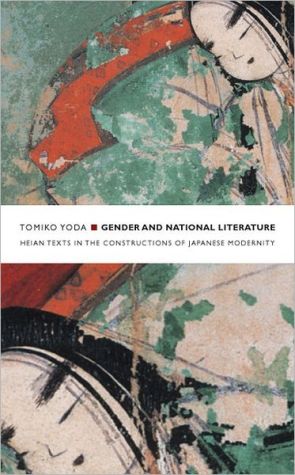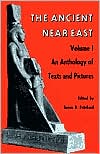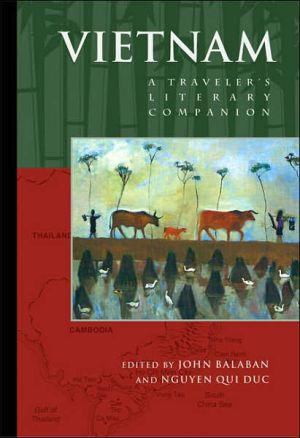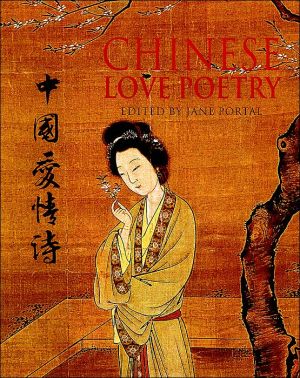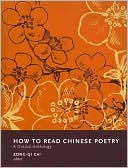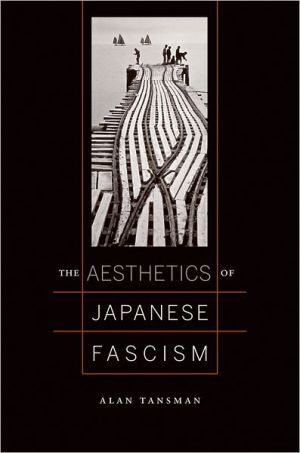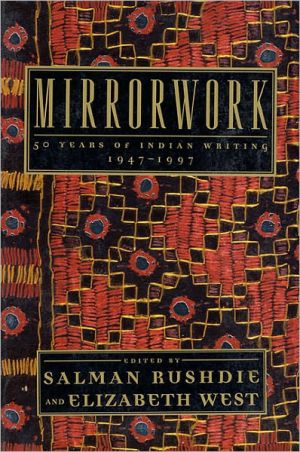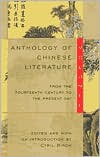Gender and National Literature: Heian Texts in the Constructions of Japanese Modernity
Boldly challenging traditional understandings of Heian literature, Tomiko Yoda reveals the connections between gender, nationalism, and cultural representation evident in prevailing interpretations of classic texts of the Heian period (794-1192). Yoda historicizes claims about the inherent femininity of Heian literature by revisiting key moments in the history of Japanese literary scholarship from the eighteenth century to the present. She argues that by foregrounding women's voices in Heian...
Search in google:
This work presents a new understanding of the way that classic works of Japanese literature have been received and understood within the framework of national literature studies in Japan.
Gender and national literature\ Heian texts in the constructions of Japanese modernity \ \ By Tomiko Yoda \ Duke University Press\ \ ISBN: 0-8223-3237-X \ \ \ Chapter One\ The Feminization of Heian and Eighteenth-Century Poetics \ Given the widely accepted image of the Heian court as populated with effete aristocrats and the reputation of the Heian period as the golden age of women's writing, the association between Heian literature and femininity seems all but inevitable. Historically, however, the identification of mid-Heian literature with feminine qualities was a notion that gained currency through the discussion of poetics during the eighteenth century. While the perception of Heian aristocratic society and culture that developed during preceding centuries no doubt informed it, the feminization of Heian literature in the eighteenth century must be understood in relation to debates over the nature of poetry and its function within the society of the time. A closer look at the principal sources from the period suggests that the identification of Heian literature in feminine terms was variously construed and contested. This chapter examines the complex sets of designs that were involved in ascribing femininity to Heian literature and identifies common concerns informing divergent perspectives. Through this analysis, I begin exploring the broader problem of how the gendering of literary history and aesthetics has functioned in the modern construction of literature.\ I argue that the feminization of Heian literature and the use of gender metaphors to discuss literary discourses germinated in response to the problems specific to eighteenth-century poetics: the need to establish a new definition of poetry and its standard of evaluation in opposition to accepted paradigms. This development in poetics, furthermore, was inextricably connected to the destabilization of the existing social and intellectual formations increasingly apparent by the early to mid-eighteenth century-including the dysfunction of the political and economic structures of Bakufu (the Tokugawa Shogunate), the challenge against the neo-Confucian intellectual order, and impacts of expanding urban space and its population. Harootunian and others have identified in the eighteenth-century debates on poetics a profound anxiety that the contemporary world had lost the immanent, spontaneous, and transparent form of human sociality and communication. The critical question, then, was how to reconstitute a unity and order of poetic modes and values in light of this condition. The problem, furthermore, was directly linked to the more general project of locating the integrity among the diverse and seemingly fragmented human experiences in which the essence of poetry was to be found. The association between poetry and social harmony is an idea found in some of the earliest forms of poetics in Japan (as well as in the Chinese poetics that often served as the model). In the eighteenth century, however, the coherence and authenticity of poetic sociality was posited against the perceived sense of growing social and linguistic opacity. It is in this context that we find the use of gender categories in the discussion of poetics. In particular, the "feminine" was constituted as a key signifier of negativity-that is, the inferior pole of an interconnected yet asymmetrical binary-in relation to which new visions of sociality, poetic theory, and poetic practice were constituted.\ Eighteenth-century poetics offered highly sophisticated responses to the problem of how to identify coherence in the anomie of human experience and how poetry construed as the purest and most authentic deployment of language may figure in such a process. This explains why it continued to inspire Japanese intellectuals, who later sought the means to grapple with the deeply unsettling impact of modernity. This prefiguration of modern discourses on literature by eighteenth-century poetics offers an important perspective on how the feminization of the Heian and the use of gender metaphors in discussing literary values and types in general took shape in modern (i.e., post-Restoration) studies of literature.\ Kamo no Mabuchi and the Feminization of Heian Poetry\ The picture of elegant Heian aristocrats inhabiting an exquisitely refined court society-immersed in the pleasures of art and literature and shunning prosaic concerns such as economic affairs, military training, and even official matters of the state bureaucracy-has circulated widely through the popular reception of mid-Heian texts such as The Tale of Genji. Takahashi Masaaki traces back the roots of these conventional images not to the Heian period itself but to the nostalgic construction of it by the courtiers of later centuries who idealized the mid-Heian period as the apogee of aristocratic culture, taking the world depicted in the Genji at face value. By the mid-fifteenth century, the economic and political power of the courtiers had undergone a marked decline and the capital they resided in had been badly damaged by repeated battles. Under such circumstances, courtiers sought to preserve their prestige, in part, by becoming purveyors of traditional arts, including poetic composition and criticism. During the Tokugawa period, the links between the courtiers and the arts were institutionalized by a Bakufu policy that removed the imperial family and courtiers from political arenas while offering them patronage for their roles as guardians of traditional learning and artistic practices. The historical transformation of the status and role of courtiers in Japanese history reinforced the perception of an effeminate and precious Heian aristocracy.\ The association between Heian literature and femininity that is often taken for granted today, however, has more specific sources in eighteenth-century poetics, particularly in the work of Kamo no Mabuchi (1697-1769). In "Nihimanabi" (ca. 1765), he writes:\ Since the Yamato region [where the capital was located during the Nara period] was a land of valiant men, in ancient times even women followed the masculine mode of composing poetry. Thus, the poems of the Man'yoshu are composed in the masculine style. Because the Yamashiro region [where the Heian capital was located] was a land of women, even men followed the feminine mode, so the poems of Kokinwakashu are mostly composed in a graceful feminine style (tawoyameburi). Furthermore, when Kokinwakashu evaluated the styles of the six poets (poetic sages), it favored a tranquil and clear style of poetry, criticizing the strong and firm style as rustic. This is because they considered the poetic style of its particular time and place as the standard, without taking into consideration archaic poems.\ Mabuchi equates the rise of feminine style with the degeneration of poetry, attributing this downturn to the decline of direct imperial rule (the domination of the court by powerful aristocratic families), as well as to the popularity of Chinese literature and culture in the early Heian period.\ Mabuchi posited the femininity of Heian society and its poetry in contrast to the masculinity of ancient poems, particularly those collected in an anthology of the Nara period, Man'yoshu. For Mabuchi, Man'yoshu epitomized the essence of waka-the unadorned and straightforward expression of feelings unsullied by artificial embellishments or intellectual manipulations. Mabuchi argued that this authentic articulation of emotion was adulterated and finally lost through the influence of Chinese language and thoughts in Japan. In order to purge such corruption, one had to develop a correct understanding of the words of the ancients through their poems and through this understanding gain access to the minds of the ancients. In contrast to Man'yoshu, the Heian poetic anthology Kokinwakashu (compiled in the tenth century and destined to become the most canonical text of waka in subsequent centuries) does not help us to emulate the archaic mind according to Mabuchi. This is because the poetry in the later collection had already been affected by artificiality and Chinese influences. Labeling Heian poetry as feminine and weak, therefore, helped shore up the alleged strength and emotional authenticity of the earlier poems found in Man'yoshu.\ Mabuchi's view of Heian poetry and the use of gender metaphors must be understood in relation to the ferment over new forms of waka poetics that arose in the eighteenth century around what we commonly refer to as kokugaku ("nativism" or more literally "native learning," as opposed to the scholarship on Chinese sources), loosely linked schools of learning concerned with a wide variety of subjects, including language, religion, and poetics studied through classical textual sources. Kokugaku challenged the two dominant currents of poetics in existence: on one hand, the reduction of poetry to (moral) didacticism and political utility assumed in the Confucian tradition; and on the other the conservatism, rigidity, and institutional insularity of the orthodox study of waka controlled by poetic schools with aristocratic lineages.\ By the early Tokugawa period, courtiers' poetics had calcified into staid conservatism, adhering closely to the sanctioned diction, theme, and rhetorical forms established largely by Heian imperial anthologies of waka. Fidelity to this canonical style of poetry was enforced by numerous arcane rules and regulations transmitted from masters to students. These teachings constituted jealously protected esoteric doctrines that conferred power and prestige to the houses of waka that claimed them. A relatively straightforward (i.e., not too technically complex) and standardized style was valorized by the mainstream courtier's poetics as the orthodoxy; and the miniscule variations within sanctioned forms and themes were cast as the sublime art of poetic composition, shrouded in pseudospiritual and mystical profundity.\ The first major challenge to the established waka criticism by kokugaku circle took shape over the controversy provoked by Kada Arimaro's poetic treatise Kokka hachiron (1742). In the text's central and the most controversial section, Arimaro offered an unequivocal rebuttal against the view that poetry has any beneficial effect on the governing of the state or has any utilitarian value in general. Instead he argued that it has no other function than to generate aesthetic enjoyment-when it achieves formal beauty and the depth of meaning, it impresses the audience and gives pleasure to the one who composed it. This view clearly dissented from the Confucian tradition of poetics as well as from the belief in the spiritual force of poetry proclaimed by the courtiers' poetics.\ Despite the apparent devaluation of poetry into a source of amusement-defining it as an artifice to be judged primarily by its formal beauty and the pleasure it offers-Kokka hachiron helped stimulate exploration into the intrinsic criteria of poetic evaluation. Mabuchi's view that poetry simply expresses true human feelings may be seen as both a further engagement with the questions raised by Kokka hachiron and a rejoinder to the specific response it offered. While the notion that poetry merely amuses and pleases the poet/audience tends to detach it from human affect, Mabuchi argued that poetry in essence is a pure expression of concrete human feelings.\ The definition of poetry as an expression of the human heart is of course one of the most orthodox doctrines of waka poetics that can be traced back to the "Kana Preface" of Kokinwakashu. Mabuchi, however, radicalized its implication, divorcing it from formal technique and the normative aesthetic paradigm of courtly elegance. Thus Man'yoshu poetry, which is identified with the pristine and straightforward style, is held up as the supreme exemplar of waka. Mabuchi's idealization of Man'yoshu and his insistence on its virile aesthetics, therefore, was underwritten by his specific understanding of poetry and the relations among human affect, the process of composing poetry, and the basis for evaluating poetic merits.\ Mabuchi's archaism should be distinguished from conservatism in that his call to return to the poetry of the ancients was based on his specific theoretical grasp of a poetic essence that defied waka orthodoxy. In this connection, we also need to note that Mabuchi's poetics, which privileged Man'yoshu, was supported by the philological methodology for studying Japanese classical texts introduced by the priest Keichu (considered to be one of the founders of kokugaku). It was through philological study that Man'yoshu, which had been marginal to mainstream waka poetics, was made more accessible, providing a foundation for the heterodox view proposed by Mabuchi and others. The philological and empirical study of ancient texts gave Mabuchi the authority to speak about the originary form of waka from a perspective unencumbered by insular esoteric doctrines.\ As for the question of instrumental and didactic values of poetry, Mabuchi did suggest the interrelations between politics and poetics. He wrote that, although poetry does not seem to have obvious utility, it could help maintain the political order by calming and soothing the minds of the people. Clearly, however, this was not the focus of his poetics. More important, his notion that in ancient times poetry sprung forth naturally from one's sensitivity and that the state was governed spontaneously (onozukara), without any contrivance and coercion, suggests that the relation between politics and poetics is noncausal or noninstrumental.\ Kageki's Critique of Gendered Periodization\ Nearly half a century after Mabuchi's pronouncement of Man'yocentrism and his characterization of the Nara period and Man'yoshu as masculine and the Heian and Kokinwakashu as feminine a systematic critique of his views was launched by an influential poet and critic, Kagawa Kageki (1768-1843). In "Nihimanabi iken" (ca. 1811), Kageki rejected Mabuchi's association of gender with geographic locations (the Yamato region identified with the Nara period versus the Yamashiro region identified with the Heian period) and historical eras (Heian versus Nara). He argued that if the Yamato region and the poems composed in it were masculine then poems from that region should have remained so throughout different historical periods. This would contradict Mabuchi's claim that the Heian period as a whole capitulated to the effeminate style of poetry.\ More important, he questioned the rationale for associating the forceful style of poetry with masculinity and the gentle style of poetry with femininity. Kageki accepted the general contrast between Man'yo poetry's forcefulness and simplicity as opposed to Kokin poetry's gentle gracefulness. He argued, however, that this distinction would be better described as one between the naive rustic style and the elegant sophistication of the capital style-consonant with the transformation of the environments in which the poems collected in the anthologies were produced (the Heian culture is often identified with the establishment of the first full-scale imperial capital in Japan, Heiankyo, which was modeled after the capital of the T'ang dynasty in China).\ In other words, although he admitted that different eras of waka history may be identified with certain overarching characteristics, he deemed masculine versus feminine to be inappropriate categories for describing these poetic styles. For one, Kageki pointed out, the pair insinuates misleading associations between the poetic styles and genders of poets (as if poems in Kokinwakashu were composed primarily by female poets). For another, referring to an entire period of poetic history as masculine would undermine the possibility that even in such an era poems composed by women may be relatively more feminine than those composed by men. Thus, it unduly underplays the variations that exist among poems of the same period. Ultimately, Kageki charged Mabuchi with manipulating the gender metaphor in order to give a positive cast to the simple and unadorned poetic style he identifies in Man'yoshu. The difference between qualities such as ornate versus stark acquires hierarchical nuances by being illustrated bymasculine-feminine contrast. The conventional sociocultural privilege of masculinity over femininity, in other words, is superimposed on the relationship between Man'yoshu and Kokinwakashu by identifying the strong and simple with masculinity.\ (Continues...)\ \ \ \ \ Excerpted from Gender and national literature by Tomiko Yoda Excerpted by permission.\ All rights reserved. No part of this excerpt may be reproduced or reprinted without permission in writing from the publisher.\ Excerpts are provided by Dial-A-Book Inc. solely for the personal use of visitors to this web site. \ \
AcknowledgmentsNote to the readerIntroduction11The feminization of Heian and eighteenth-century poetics252Gender and the nationalization of literature413Women and the emergence of Heian kana writing814Politics and poetics in The Tale of Genji1115Tokieda's imperial subject and the textual turn in Heian literary studies1466Gender and Heian narrative form182Epilogue : Heian texts and feminist subjects214Notes231Bibliography261Index269
\ From the Publisher“I can think of few other scholarly monographs that have taught us as much about the historical significance of the study of classical ‘literature’ in modernity. The narrative texts of Heian Japan have never received more meticulous and rigorous scrutiny achieved with such sheer intelligence. Tomiko Yoda succeeds in speaking to interdisciplinary and international audiences about why the institution of ‘literature’ had to serve a crucial role in the manufacture of specifically gendered subjects of the nation and how the pronominal categories had to be invented in order to newly designate modern subjects. She has laid a cornerstone in the literary studies of modernity, which the cultural studies of Japan, East Asia, and Europe can no longer ignore. This is a remarkable achievement.”—Naoki Sakai, Cornell University\ “Keenly, lucidly, thoroughly, Gender and National Literature shows how the modern feminization of Heian literature did not simply parallel the formation of the modern subject in Japan, but proved integral to it. Tomiko Yoda thus issues a profound challenge to the received wisdom about the femininity and the ‘women’ of classical literature. And her response is brilliant: turning to the materiality of the Heian text, Yoda poses new readings that take the question of gender far beyond previous studies of Heian and modern Japanese literature.”—Thomas LaMarre, author of Uncovering Heian Japan: An Archaeology of Sensation and Inscription\ \ \
